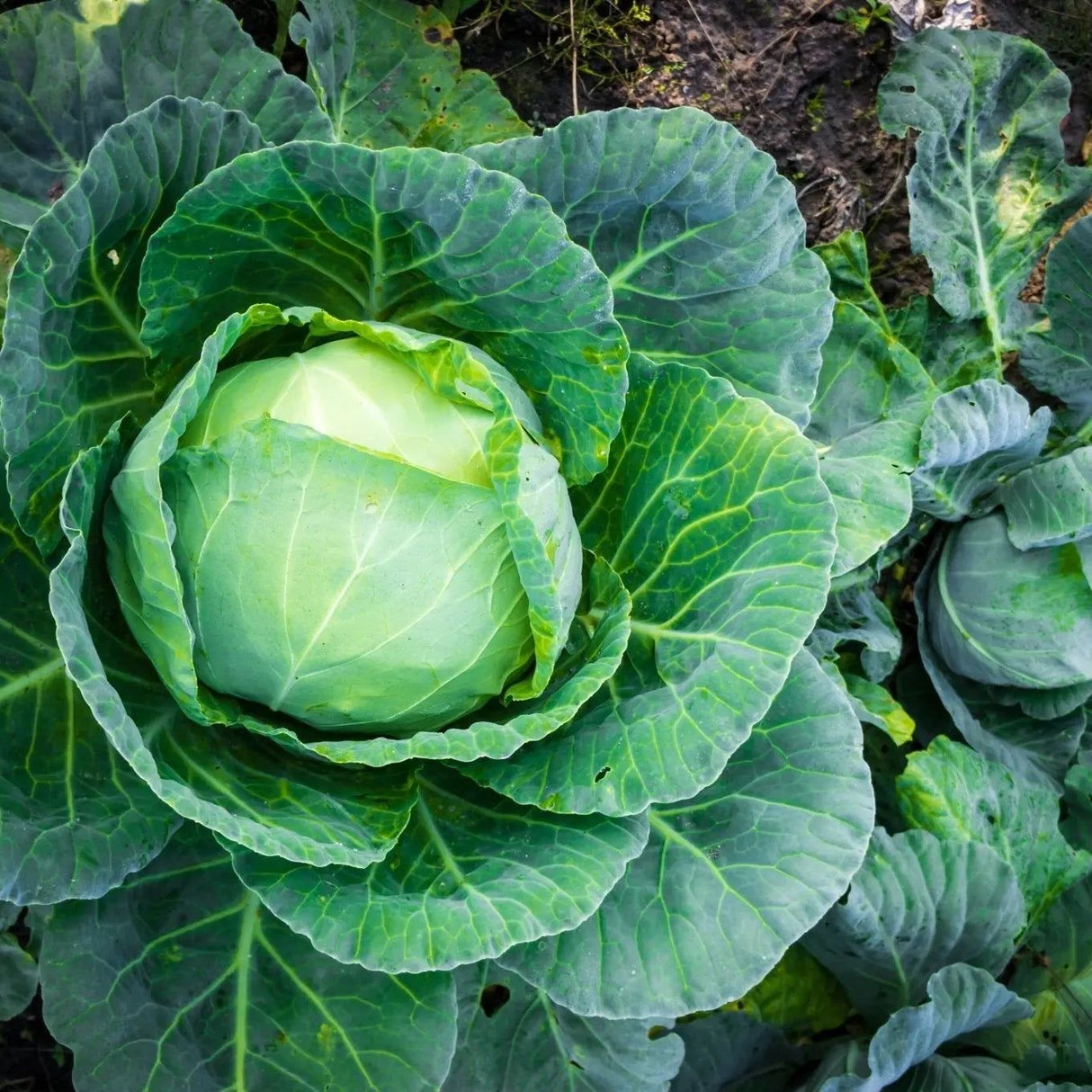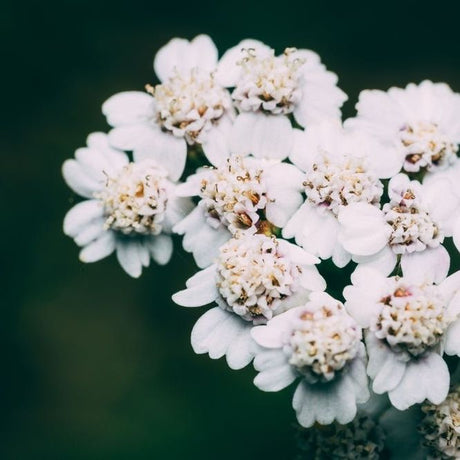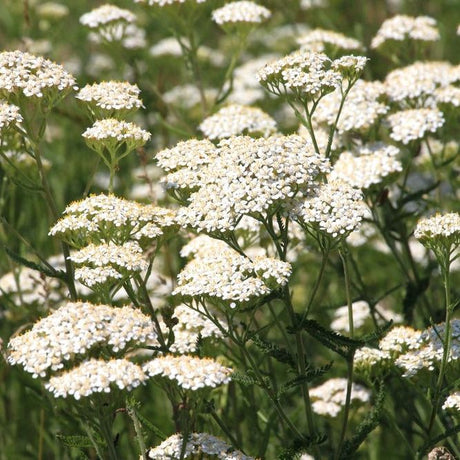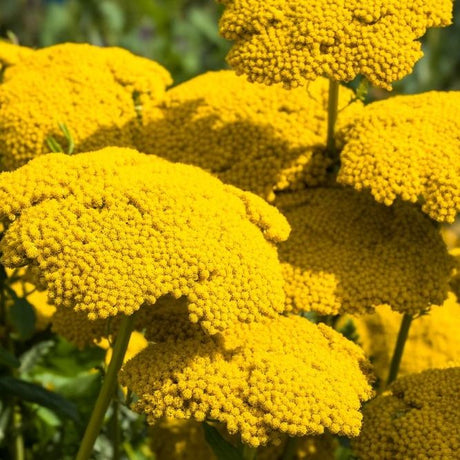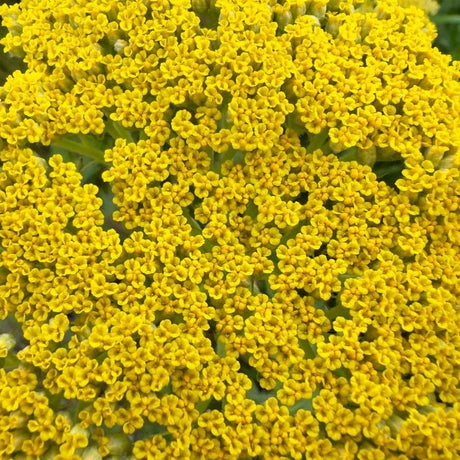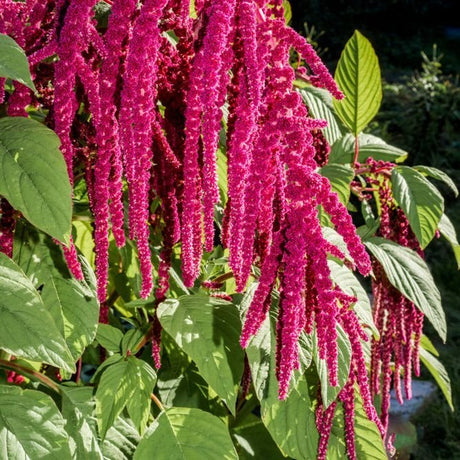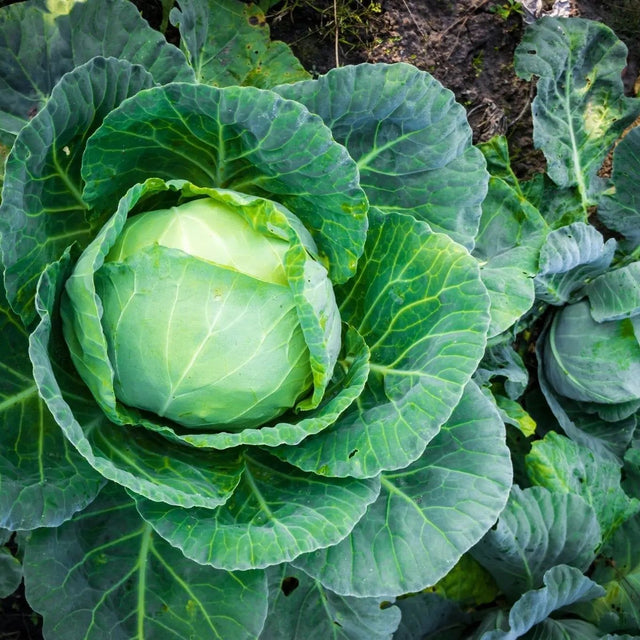Cabbage Seeds - Late Flat Dutch Cabbage
Cabbage Seeds - Late Flat Dutch Cabbage is backordered and will ship as soon as it is back in stock.
Seed Count: 300 Seeds
Maturity: 85-110 Days from Transplanting
Growth Habit: Upright plant with large, dense heads.
Head Characteristics: Heads weigh 10-12 pounds and span 24-30 inches in diameter. Outer leaves are blue-green, with tender, white inner leaves.
Flavor Profile: Mildly sweet, perfect for fresh and cooked dishes.
Plant Type: Heirloom, open-pollinated, non-GMO variety.
Planting Season: Suitable for Spring or Fall planting.
Frost Tolerance: Highly frost-tolerant, ideal for cooler climates.
Growing Conditions: Thrives in full sun with well-drained, fertile soil enriched with organic matter.
History & Heritage:
The Late Flat Dutch Cabbage is a classic heirloom variety that has been a staple in gardens and farms for generations. Renowned for its massive, flavorful heads and reliable yields, it has earned its place as a trusted crop among home gardeners and commercial growers alike. Its resilience and adaptability make it a favorite for late-season harvests, especially in cooler climates.
Culinary Versatility:
Late Flat Dutch Cabbage is a versatile ingredient, prized for its mild sweetness and tender leaves. It shines in a variety of dishes, from classic coleslaw and hearty cabbage rolls to fermented foods like sauerkraut. Its robust heads hold up beautifully to steaming, sautéing, and braising, making it a staple in both European and American culinary traditions. Whether used fresh or cooked, this cabbage delivers consistent quality and flavor.
Planting & Growth Tips:
Growing Late Flat Dutch Cabbage is straightforward and rewarding, producing large, flavorful heads that store well. Follow these tips for successful cultivation:
- Planting: Sow seeds indoors 6-8 weeks before the last frost or directly in the garden 2-3 weeks before the last frost for spring planting. For fall planting, sow seeds in late summer. Transplant seedlings into the garden when they are 4-6 weeks old, spacing plants 18-24 inches apart in rows spaced 30-36 inches apart.
- Soil: Use well-draining soil enriched with organic matter or fertilizer. Maintain a pH between 6.0-7.0 for optimal growth.
- Sunlight: Provide full sun exposure to support vigorous growth and large head formation.
- Watering: Keep soil consistently moist but not waterlogged, especially during head development. Mulching around the plants can help retain moisture and regulate soil temperature.
- Fertilizing: Being a heavy feeder, this cabbage benefits from regular applications of balanced fertilizer or compost to encourage robust growth.
- Care: Late Flat Dutch Cabbage is frost-tolerant, making it suitable for extended growing periods in cooler climates. Monitor for pests such as cabbage loopers and aphids, and use organic pest control methods as needed.
- Harvesting: Harvest heads when they are firm, dense, and reach their full size. Store in a cool, dry place for extended freshness.
Why Grow Late Flat Dutch Cabbage?
Late Flat Dutch Cabbage is a perfect combination of size, flavor, and reliability. Its large heads and mild sweetness make it a favorite for fresh eating, cooking, and preserving. This heirloom variety thrives in cooler climates and exhibits remarkable frost tolerance, making it an ideal choice for late-season planting. Add Late Flat Dutch Cabbage to your garden for a dependable and bountiful harvest of tender, flavorful heads.
Couldn't load pickup availability
Description
Description
Seed Count: 300 Seeds
Maturity: 85-110 Days from Transplanting
Growth Habit: Upright plant with large, dense heads.
Head Characteristics: Heads weigh 10-12 pounds and span 24-30 inches in diameter. Outer leaves are blue-green, with tender, white inner leaves.
Flavor Profile: Mildly sweet, perfect for fresh and cooked dishes.
Plant Type: Heirloom, open-pollinated, non-GMO variety.
Planting Season: Suitable for Spring or Fall planting.
Frost Tolerance: Highly frost-tolerant, ideal for cooler climates.
Growing Conditions: Thrives in full sun with well-drained, fertile soil enriched with organic matter.
History & Heritage:
The Late Flat Dutch Cabbage is a classic heirloom variety that has been a staple in gardens and farms for generations. Renowned for its massive, flavorful heads and reliable yields, it has earned its place as a trusted crop among home gardeners and commercial growers alike. Its resilience and adaptability make it a favorite for late-season harvests, especially in cooler climates.
Culinary Versatility:
Late Flat Dutch Cabbage is a versatile ingredient, prized for its mild sweetness and tender leaves. It shines in a variety of dishes, from classic coleslaw and hearty cabbage rolls to fermented foods like sauerkraut. Its robust heads hold up beautifully to steaming, sautéing, and braising, making it a staple in both European and American culinary traditions. Whether used fresh or cooked, this cabbage delivers consistent quality and flavor.
Planting & Growth Tips:
Growing Late Flat Dutch Cabbage is straightforward and rewarding, producing large, flavorful heads that store well. Follow these tips for successful cultivation:
- Planting: Sow seeds indoors 6-8 weeks before the last frost or directly in the garden 2-3 weeks before the last frost for spring planting. For fall planting, sow seeds in late summer. Transplant seedlings into the garden when they are 4-6 weeks old, spacing plants 18-24 inches apart in rows spaced 30-36 inches apart.
- Soil: Use well-draining soil enriched with organic matter or fertilizer. Maintain a pH between 6.0-7.0 for optimal growth.
- Sunlight: Provide full sun exposure to support vigorous growth and large head formation.
- Watering: Keep soil consistently moist but not waterlogged, especially during head development. Mulching around the plants can help retain moisture and regulate soil temperature.
- Fertilizing: Being a heavy feeder, this cabbage benefits from regular applications of balanced fertilizer or compost to encourage robust growth.
- Care: Late Flat Dutch Cabbage is frost-tolerant, making it suitable for extended growing periods in cooler climates. Monitor for pests such as cabbage loopers and aphids, and use organic pest control methods as needed.
- Harvesting: Harvest heads when they are firm, dense, and reach their full size. Store in a cool, dry place for extended freshness.
Why Grow Late Flat Dutch Cabbage?
Late Flat Dutch Cabbage is a perfect combination of size, flavor, and reliability. Its large heads and mild sweetness make it a favorite for fresh eating, cooking, and preserving. This heirloom variety thrives in cooler climates and exhibits remarkable frost tolerance, making it an ideal choice for late-season planting. Add Late Flat Dutch Cabbage to your garden for a dependable and bountiful harvest of tender, flavorful heads.

